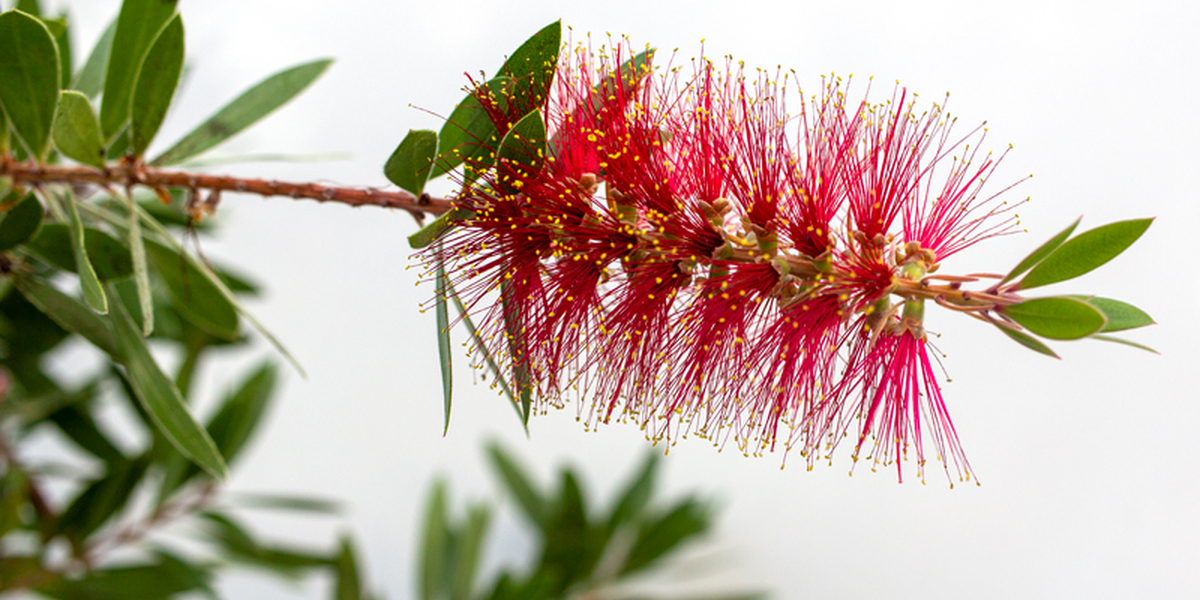
Gardeners around the world adore Melaleuca citrina, flowering now at the Conservatory, for its beautiful red bottlebrush flowers and pleasing aroma. The species was first described in Curtis’ Botanical Magazine in 1794 from a lovely specimen growing on the estate of an Irish viscount.
In the early 19th century, British botanists began propagating and disseminating M. citrina around the British Empire, including to Australia, where it became a popular landscape plant. But there’s a twist! The British plants sent to Australia were not actually the first to grow in Australia, as Melaleuca citrina is actually native to eastern Australia. Aboriginal peoples have used melaleucas, also called paperbarks, for generations: the bark can be used as roofing or raft-making material, the leaves have medicinal properties, and some species even have bulges in their trunk that can release water if punctured during the dry season.
The specimen on the Irish estate grew from a root cutting collected by botanist Joseph Banks, sailing with Captain James Cook on the HMS Endeavour into Botany Bay. This colonial pipeline (where a plant is ‘discovered’ somewhere in a European colony, brought back to the home country for study, then disseminated throughout the colonial empire) is very common for some of the world’s most interesting and beloved plants. Though they may have been grown, named, and studied in the grand gardens of Europe, M. citrina has been growing in the swamps and rocky watercourses of the eastern Australian coast, and used by local people, for thousands of years.
Melaleuca citrina lives in the room 3C at the Conservatory.